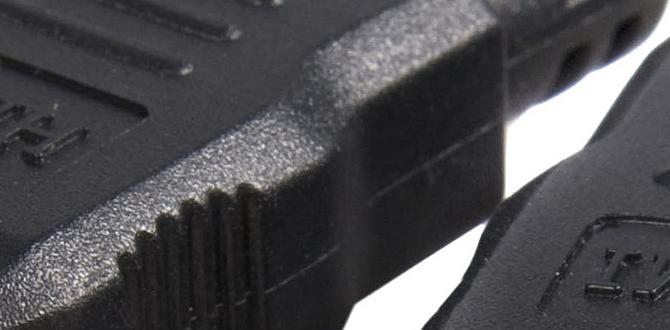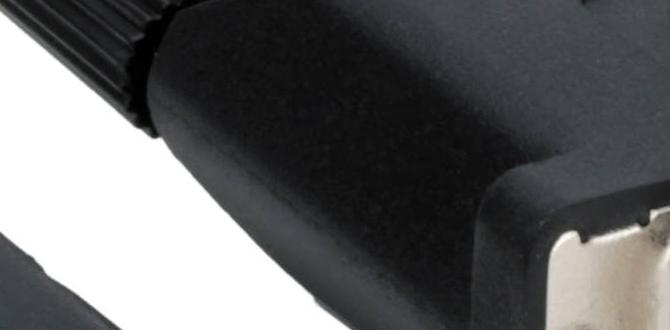When it comes to setting up a high-performance gaming or display system, choosing the right cable is crucial. For smooth and fluid visuals, a 144Hz refresh rate is highly recommended. But with different cable options available, it can be confusing to determine which one is best suited for your needs. In this article, I will explore the three main cable types used for achieving the coveted 144Hz refresh rate: DisplayPort, HDMI, and DVI.
DisplayPort Cable
A DisplayPort cable is a popular choice among gamers and enthusiasts. It offers several advantages over other cable options, including support for higher resolutions, refresh rates, and greater bandwidth. With its ability to transmit high-quality audio and video signals, DisplayPort ensures a seamless gaming experience at 144Hz.
Benefits of using a DisplayPort cable for 144Hz
- Higher refresh rates: DisplayPort supports higher refresh rates, making it ideal for a smooth gaming experience.
- Greater bandwidth: With increased bandwidth, DisplayPort can handle higher resolutions and color depths, resulting in better image quality.
- Audio and video transmission: DisplayPort can transmit both audio and video signals, eliminating the need for additional cables.
Compatibility with DisplayPort cable for 144Hz
Most modern graphics cards and monitors come equipped with DisplayPort ports, ensuring seamless compatibility. However, it is essential to check the specifications of your devices to ensure they support the desired refresh rate of 144Hz.
HDMI Cable

An HDMI cable is a commonly used option for connecting gaming consoles, TVs, and monitors. While it may not offer the same level of performance as DisplayPort, HDMI is still capable of supporting a 144Hz refresh rate, especially with recent HDMI 2.0 and 2.1 standards.
Advantages of using an HDMI cable for 144Hz
- Wide availability: HDMI cables are widely available, making them accessible and easy to find.
- Audio and video transmission: HDMI cables can transmit both audio and video signals, simplifying the setup process.
- Potential for 144Hz support: With the of HDMI 2.0 and 2.1 standards, HDMI cables can now support a 144Hz refresh rate.
Compatibility with HDMI cable for 144Hz
When using HDMI cables for 144Hz, it is crucial to ensure that both your graphics card and monitor support the required HDMI version. Older versions may not have the necessary bandwidth to achieve a 144Hz refresh rate.
DVI Cable

DVI (Digital Visual Interface) cables were once the go-to choice for high-performance displays. Although they have become less prevalent in recent years, DVI cables can still be used for achieving a 144Hz refresh rate, primarily with dual-link DVI.
Advantages of using a DVI cable for 144Hz
- Reliable performance: DVI cables have a long-established history of delivering reliable performance for high-resolution displays.
- Dual-link DVI support: Dual-link DVI cables offer higher bandwidth, allowing for a 144Hz refresh rate.
- Compatibility with older devices: If you have older monitors or graphics cards that lack DisplayPort or HDMI ports, DVI can be a viable option.
Compatibility with DVI cable for 144Hz
Not all DVI cables can support a 144Hz refresh rate. It is crucial to use a dual-link DVI cable and ensure that your graphics card and monitor have the necessary DVI ports. Additionally, some newer graphics cards may not include DVI ports, so compatibility should be checked beforehand.
Conclusion
Choosing the right cable for achieving a 144Hz refresh rate depends on the compatibility of your devices and the features you prioritize. DisplayPort offers the highest performance and is widely supported, making it an excellent choice. HDMI cables, particularly those conforming to the latest standards, can also deliver a 144Hz refresh rate. Lastly, DVI cables, specifically dual-link DVI, can still be used for older machines or monitors lacking newer ports. Consider your system’s requirements and choose the cable that best suits your needs.
Frequently Asked Questions (FAQs)
1. Can I use an HDMI cable for 144Hz gaming?
Yes, you can use an HDMI cable for 144Hz gaming, but it depends on the HDMI version and whether your graphics card and monitor support the required standard.
2. Can a DisplayPort to HDMI adapter achieve 144Hz?
Not all DisplayPort to HDMI adapters can achieve a 144Hz refresh rate. You need an active adapter supporting a high enough HDMI version and sufficient bandwidth for 144Hz.
3. What is the maximum refresh rate supported by DVI cables?
Dual-link DVI cables can support a maximum refresh rate of 144Hz. Single-link DVI cables, on the other hand, are limited to 60Hz.
4. Are there any benefits to using DisplayPort over HDMI for 144Hz?
DisplayPort offers several advantages over HDMI, including higher bandwidth, better color depth, and support for higher resolutions. These factors can contribute to an overall better gaming or viewing experience at 144Hz.
5. Can I mix cable types to achieve a 144Hz refresh rate?
In most cases, it is not recommended to mix cable types to achieve a 144Hz refresh rate. It is best to use the same cable type throughout your entire setup to ensure optimal performance and compatibility.